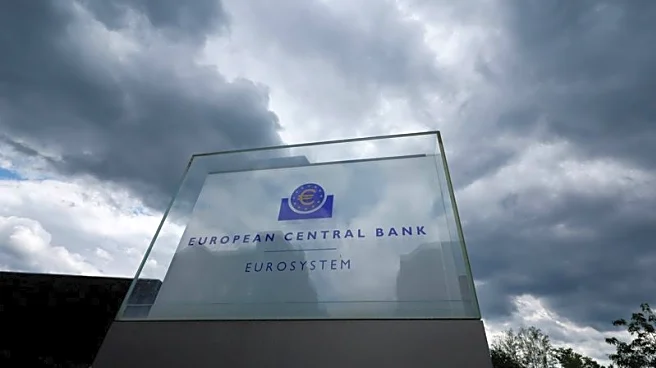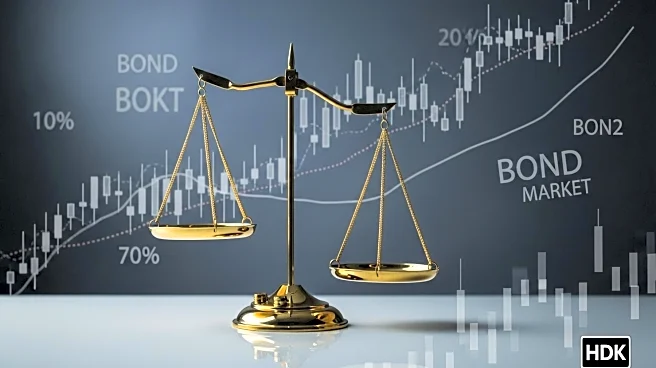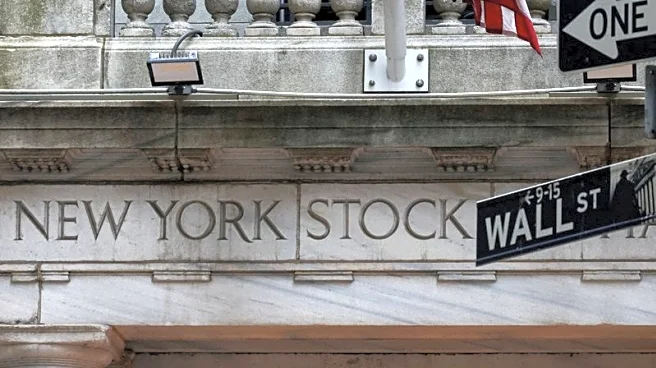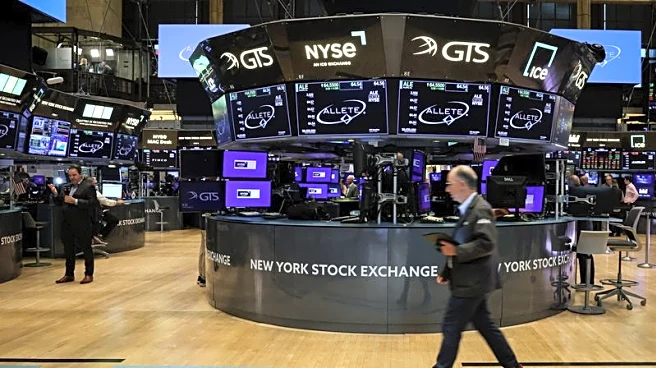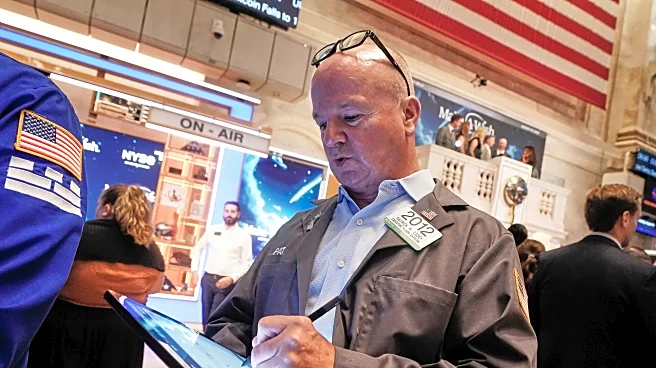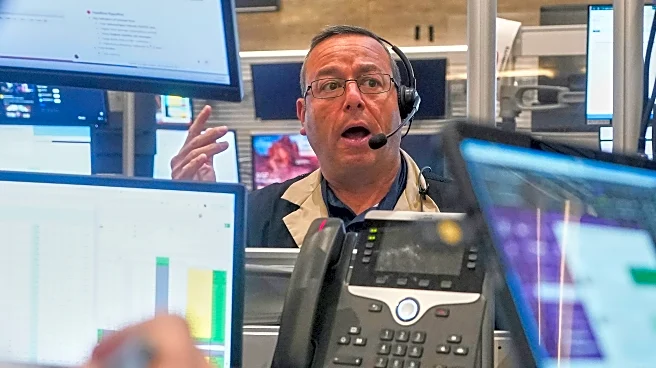What is the story about?
What's Happening?
Gold prices have hit a new record as stock futures on Wall Street tumble, driven by concerns over President Trump's tariff policies. The S&P 500 futures fell by 0.51%, Nasdaq 100 futures by 0.66%, and Dow Jones futures by 0.37%. This market reaction follows an appeals court decision to overturn President Trump's tariff plan, adding to the uncertainty as the U.S. Supreme Court prepares to take the case. Additionally, President Trump's influence over the Federal Reserve is causing unease among investors, with calls for criminal probes into Fed officials. Despite these concerns, long-term inflation expectations remain stable, indicating that the market is not yet pricing in a significant shift in the Fed's approach to inflation. Meanwhile, Goldman Sachs reports that 80% of firms are passing tariff-related cost increases to consumers, which could impact consumer spending.
Why It's Important?
The rise in gold prices and the decline in stock futures reflect investor anxiety over the economic implications of President Trump's tariff policies. Tariffs can lead to increased costs for businesses, which are often passed on to consumers, potentially reducing consumer spending and slowing economic growth. The uncertainty surrounding the tariffs and the Federal Reserve's independence could further destabilize financial markets. If consumer spending weakens, it could have broader implications for the U.S. economy, affecting sectors reliant on consumer demand. The situation underscores the delicate balance between maintaining low inflation and supporting economic growth, which is crucial for market stability.
What's Next?
The U.S. Supreme Court's upcoming decision on the tariff case will be closely watched, as it could have significant implications for trade policy and market confidence. Investors will also monitor developments regarding President Trump's influence over the Federal Reserve, as any perceived loss of independence could impact monetary policy and inflation expectations. Businesses and consumers may need to adjust to the ongoing tariff-related price increases, potentially leading to shifts in spending patterns. Stakeholders across industries will likely advocate for clarity and stability in trade and monetary policies to mitigate economic risks.
Beyond the Headlines
The ongoing tariff situation raises questions about the long-term impact on U.S. trade relations and economic competitiveness. As businesses adjust to higher costs, there may be shifts in supply chains and production strategies, potentially affecting employment and investment. The political dynamics surrounding the Federal Reserve's independence highlight the importance of maintaining a non-partisan approach to monetary policy, which is essential for economic stability. These developments could influence future policy debates and decisions, shaping the economic landscape for years to come.
AI Generated Content
Do you find this article useful?


